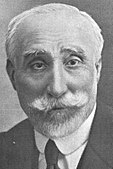Spanish general election, 1918
|
|
|||||||||||||||||||||||||||||||||||||||||||||||||||||||||||||||||||||||||||||
|---|---|---|---|---|---|---|---|---|---|---|---|---|---|---|---|---|---|---|---|---|---|---|---|---|---|---|---|---|---|---|---|---|---|---|---|---|---|---|---|---|---|---|---|---|---|---|---|---|---|---|---|---|---|---|---|---|---|---|---|---|---|---|---|---|---|---|---|---|---|---|---|---|---|---|---|---|---|
|
|||||||||||||||||||||||||||||||||||||||||||||||||||||||||||||||||||||||||||||
|
All 409 seats in the Congress of Deputies and 180 (of 360) seats in the Senate 205 seats needed for a majority in the Congress of Deputies |
|||||||||||||||||||||||||||||||||||||||||||||||||||||||||||||||||||||||||||||
| Registered | 4,189,976–4,719,662 | ||||||||||||||||||||||||||||||||||||||||||||||||||||||||||||||||||||||||||||
| Turnout | 2,790,164 (59.1–66.6%) | ||||||||||||||||||||||||||||||||||||||||||||||||||||||||||||||||||||||||||||
|
|||||||||||||||||||||||||||||||||||||||||||||||||||||||||||||||||||||||||||||
|
|||||||||||||||||||||||||||||||||||||||||||||||||||||||||||||||||||||||||||||
Manuel García Prieto
Liberal Democrats
The 1918 Spanish general election was held on Sunday, 24 February and on Sunday, 10 March 1918, to elect the 17th Restoration Cortes of the Kingdom of Spain. All 409 seats in the Congress of Deputies were up for election, as well as 180 of 360 seats in the Senate.
The Spanish legislature, the Cortes, was composed of two chambers at the time of the 1918 election:
This was a nearly perfect bicameral system, with the two chambers established as "co-legislative bodies". Both chambers had legislative, control and budgetary functions, sharing equal powers except for laws on contributions or public credit, where the Congress had preeminence.
The Spanish Constitution of 1876 enshrined Spain as a constitutional monarchy, awarding the King power to name senators and to revoke laws, as well as the title of commander-in-chief of the army. The King would also play a key role in the system of the turno pacífico (Spanish for "Peaceful Turn") by appointing and toppling governments and allowing the opposition to take power. Under this system, the Conservative and Liberal parties alternated in power by means of election rigging, which they achieved through the encasillado, using the links between the Ministry of the Interior, the provincial civil governors, and the local bosses (caciques) to ensure victory and exclude minor parties from the power sharing.
...
Wikipedia






